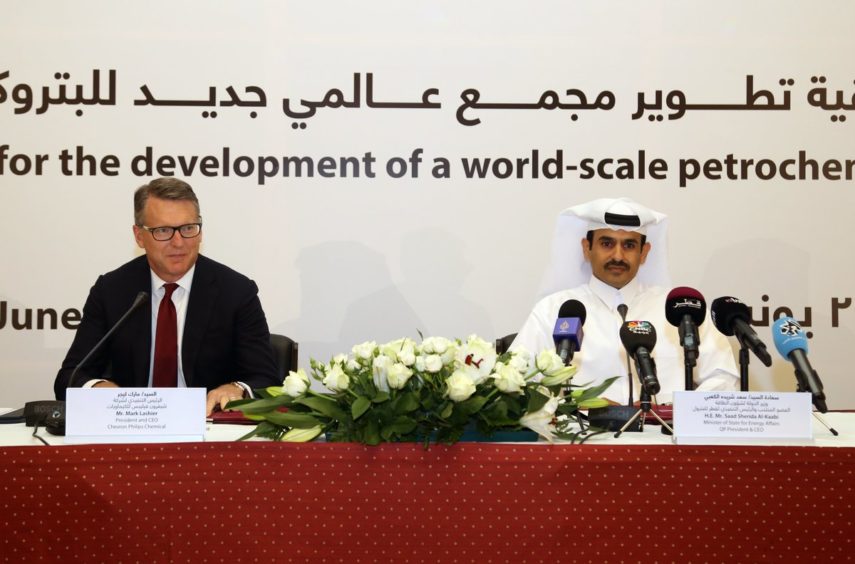
Chevron Phillips Chemical Co. will help gas-rich Qatar build the Middle East’s largest plant for production of ethylene, a key ingredient in plastics.
Qatar Petroleum chose Chevron Phillips Chemical as its partner in a joint venture to produce as much as 1.9 million tons a year of ethylene, Saad Sherida Al-Kaabi, QP’s chief executive officer, said in Doha. The venture will process the chemical from ethane, a natural gas liquid, pumped at Qatar’s giant North Field.
The venture will cost billions of dollars, though a more precise estimate must await the completion of engineering studies, Al-Kaabi said. State-run QP raised the production target from an initial plan for 1.6 million tons a year.
“We saw better results than expected from the North Field, and we were able to have more ethane available for extraction,” Al-Kaabi said Monday, referring to Qatar’s portion of the offshore reservoir it shares with Iran. So, QP increased the venture’s ethylene target, he said. “We like them big in Qatar.”
Qatar, the world’s largest exporter of liquefied natural gas, is boosting output at home and picking up assets abroad. This latest push into chemicals reverses its previous pullback from the industry, when it ended plans to build two projects valued at $12.5 billion after oil prices collapsed in 2014.
Biggest Cracker
The joint venture will be the biggest facility in the Middle East for processing ethane — or “cracking” it, in industry parlance — into ethylene, Al-Kaabi said. It will also produce high density polyethylene, Chevron Phillips Chemical CEO Mark Lashier said. QP will own 70% of the project, with the Texas-based company holding the rest.
Petrochemicals are the building blocks of our daily stuff, from sports shoes to computer keyboards, created when oil and natural gas molecules are split, or cracked, to produce ethylene, propylene and other chemicals. Ethylene is used to make polyethylene, the most commonly used plastic.
Energy producers view these compounds increasingly as crucial to unlocking more profit from each barrel of crude they pump, and demand for these chemicals is growing faster than for oil and gas.
With oil at $65 a barrel, crude producers can earn $15 a barrel by refining their output and an extra $30 on top of that by converting it into petrochemicals, Abdulwahab Al Sadoun, secretary-general of the Gulf Petrochemicals & Chemicals Association, told Bloomberg last year.
Qatar, a sheikhdom in the Persian Gulf, plans to boost LNG capacity from 77 million tons to 110 million tons by 2024, which will lift its total domestic production of oil and gas to 6.5 million barrels of oil equivalent a day from 4.8 million currently. It has already made a “final decision” to proceed with the LNG expansion, said Al-Kaabi, who also serves as the country’s minister of state for energy affairs.
Expansion at the North Field is going according to plan, and Qatar will award engineering, procurement and construction contracts for onshore facilities this year, Al-Kaabi said. Qatar is still to decide whether to produce LNG by itself or with partners.
Its offshore Barzan gas project should start producing by the end of 2019, he said. Barzan, which is intended to supply the local market, has been delayed for years.
Qatar’s gas ambitions aren’t confined to the giant offshore field it shares with Iran. The country is going global, pledging $20 billion for U.S. gas and LNG, and picking up stakes in projects and exploration licenses in Mozambique, Argentina, Mexico and Cyprus.